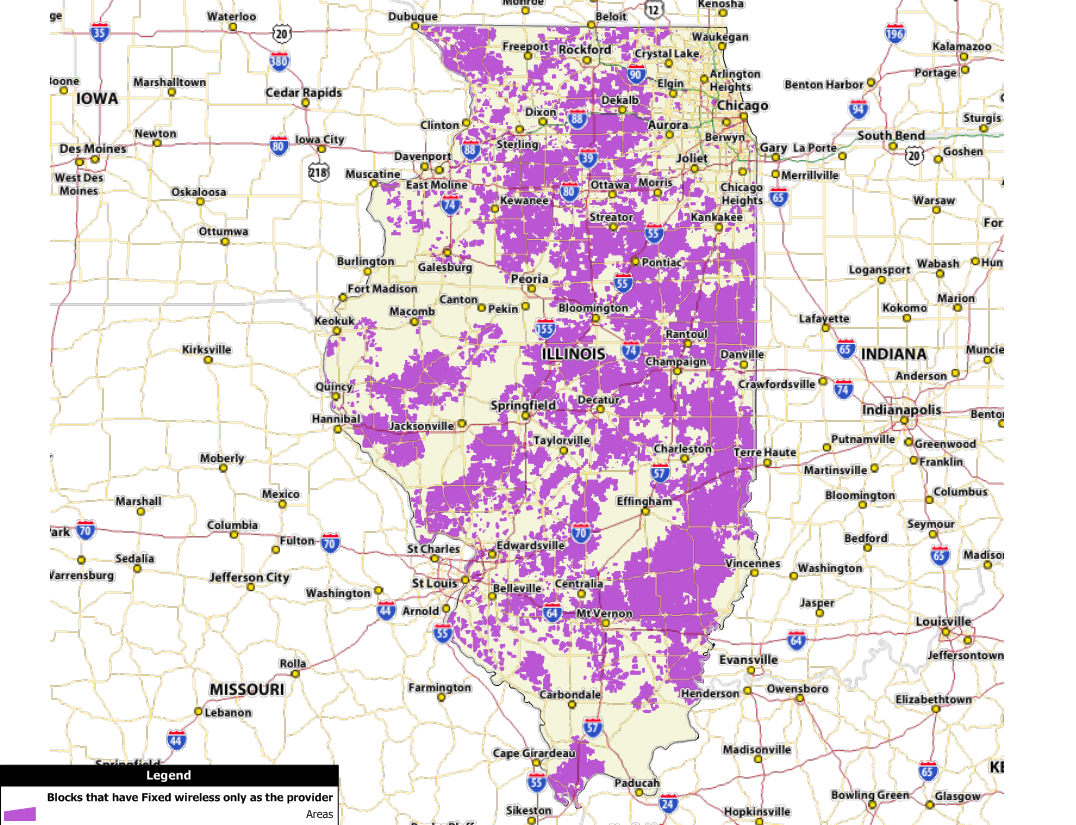In recent months, WISPs have been sharing their ideas and concerns about FirstNet and its effect on the WISP industry. As you may know, Congress gave FirstNet $2 billion dollars and an IOU for $5 billion more to establish a nationwide wireless LTE first-responders’ network. The FCC gave FirstNet 20 MHz of 700 MHz spectrum to use for free. Only in America can a company be so well funded without a management team, business or technical plan. But that is all changing, very fast.
A Role for WISPs in FirstNet
FirstNet turned out to be a big topic of conversation during the recent WISPAmerica conference in Covington, KY. FirstNet board member Ed Reynolds, a former wireless executive widely credited with successfully merging AT&T with BellSouth, spoke to WISPs about FirstNet. He saw that WISPs are in a good position to help stand up this new network, particularly in rural areas where the big carriers have not already built LTE networks.
This much is clear: WISPs have an opportunity to work with FirstNet. Existing wireless, tower, and backhaul infrastructure can be leveraged in return for financial consideration and, potentially, to access 700 MHz spectrum for commercial use in return for building the LTE first-responders network.
Technical parameters are being developed.
WISPs most often ask us about the technical parameters and capabilities of the proposed network. Technical specifications remain to be determined, and because so much remains to be decided, this is not an opportunity that every WISP can get their arms around. At this early stage, some of the unanswered questions are set to be resolved in this FCC Notice of Proposed Rulemaking:
(http://transition.fcc.gov/Daily_Releases/Daily_Business/2013/db0312/FCC-13-31A1.pdf).
The FCC is considering initial rules to implement a statutory framework for deploying and operating the nationwide public safety broadband network. The main topic areas in the NPRM include 1) technical service rules, such as power limits, emission limits, field strength limits and interference coordination, 2) comment on the FCC’s exercise of the FCC’s statutory responsibilities relative to the oversight of FirstNet and 3) addressing how to treat different classes of incumbents in the FirstNet spectrum, which will use both the existing broadband public safety spectrum (763-769/793-799 MHz) and the D Block spectrum (758-763/788-793 MHz).
Interested WISPs are taking action.
With the support of WISPA’s Emergency Communications Action Team (WECAT), and as its counsel, we have organized a group of motivated WISPs seeking to impose rural construction milestones on FirstNet (to encourage partnering with WISPs to help ensure that this spectrum is utilized). The FCC notice is here:
http://transition.fcc.gov/Daily_Releases/Daily_Business/2013/db0312/FCC-13-31A1.pdf
Our hope is that this group of WISPs will pave the way for broader participation by WISPs in FirstNet. In the meantime, we are working to raise awareness of the many contributions WISPs can make to the success of FirstNet.
Regional workshops and state-level coordination
For now, FirstNet is holding six regional consultation workshops in May and June of 2013. These meetings represent the formal kick-off of FirstNet’s consultation and engagement with state, regional, tribal, and local jurisdictions and public safety entities. During these meetings, FirstNet is providing a project update and is gathering input from attendees about their state’s specific, and often unique, requirements and priorities. What FirstNet members learn in each regional workshop will help FirstNet design the network and conduct an effective vendor RFI/RFP process. This will in turn drive the timeline for delivering the state-level build-out plans needed so each state can evaluate its participation in FirstNet.
States have the right to opt-out of participating in FirstNet. WISPs are well advised to stay connected to learn who each State appoints to coordinate with FirstNet, and to introduce yourself and your company’s capabilities. WECAT has been working successfully to raise awareness of WISPs generally within FirstNet and at NTIA. Our progress was clear when FirstNet agreed to send Ed Reynolds to WISPAmerica.
A copy of the presentation of FirstNet Board members from the first regional workshop is posted on FirstNet’s page on the NTIA website (http://www.ntia.doc.gov/category/firstnet). The NTIA website is one of the best sources for information about FirstNet and to find requests for proposals from FirstNet.
Controversy in the Capitol
Of course, FirstNet is not without drama. What would life be like in Washington, DC without drama?
Sheriff Fitzgerald of Store County, Iowa, a FirstNet Board member, dropped a bombshell at the last Board meeting when he accused other Board members of improper conduct in awarding consulting agreements and in failing to share information and to conduct open meetings. Some in the public safety community say that the Board is dominated by large wireless companies that wish to commercialize the spectrum, a feeling some WISPs have conveyed to me.
It doesn’t help dispel this perception that its new CEO, Bill D’Agostino, Jr., just left Verizon to join FirstNet. I have said before that there will be Congressional hearings long before there is a network and for now, lawyers are left to look into the charges. We haven’t heard the last on this issue.
Nor have we heard the last about FirstNet. Despite the skepticism I share with many about FirstNet and about the role of government in standing up a wireless network, there are opportunities to work with FirstNet to do good in your communities, to monetize the spectrum and leverage the build-out in ways that cannot be ignored.

